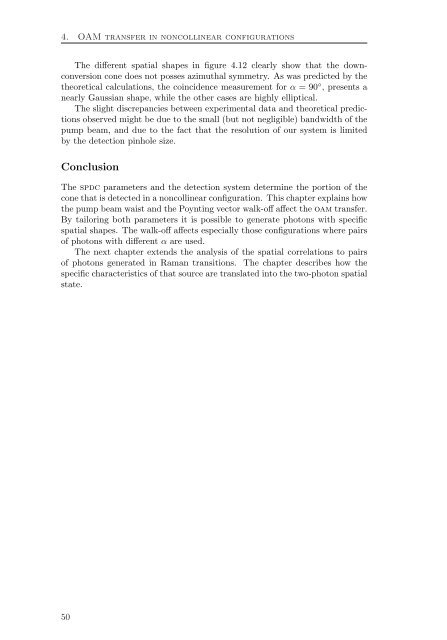Spatial Characterization Of Two-Photon States - GAP-Optique
Spatial Characterization Of Two-Photon States - GAP-Optique
Spatial Characterization Of Two-Photon States - GAP-Optique
You also want an ePaper? Increase the reach of your titles
YUMPU automatically turns print PDFs into web optimized ePapers that Google loves.
4. OAM transfer in noncollinear configurations<br />
The different spatial shapes in figure 4.12 clearly show that the downconversion<br />
cone does not posses azimuthal symmetry. As was predicted by the<br />
theoretical calculations, the coincidence measurement for α = 90 ◦ , presents a<br />
nearly Gaussian shape, while the other cases are highly elliptical.<br />
The slight discrepancies between experimental data and theoretical predictions<br />
observed might be due to the small (but not negligible) bandwidth of the<br />
pump beam, and due to the fact that the resolution of our system is limited<br />
by the detection pinhole size.<br />
Conclusion<br />
The spdc parameters and the detection system determine the portion of the<br />
cone that is detected in a noncollinear configuration. This chapter explains how<br />
the pump beam waist and the Poynting vector walk-off affect the oam transfer.<br />
By tailoring both parameters it is possible to generate photons with specific<br />
spatial shapes. The walk-off affects especially those configurations where pairs<br />
of photons with different α are used.<br />
The next chapter extends the analysis of the spatial correlations to pairs<br />
of photons generated in Raman transitions. The chapter describes how the<br />
specific characteristics of that source are translated into the two-photon spatial<br />
state.<br />
50



